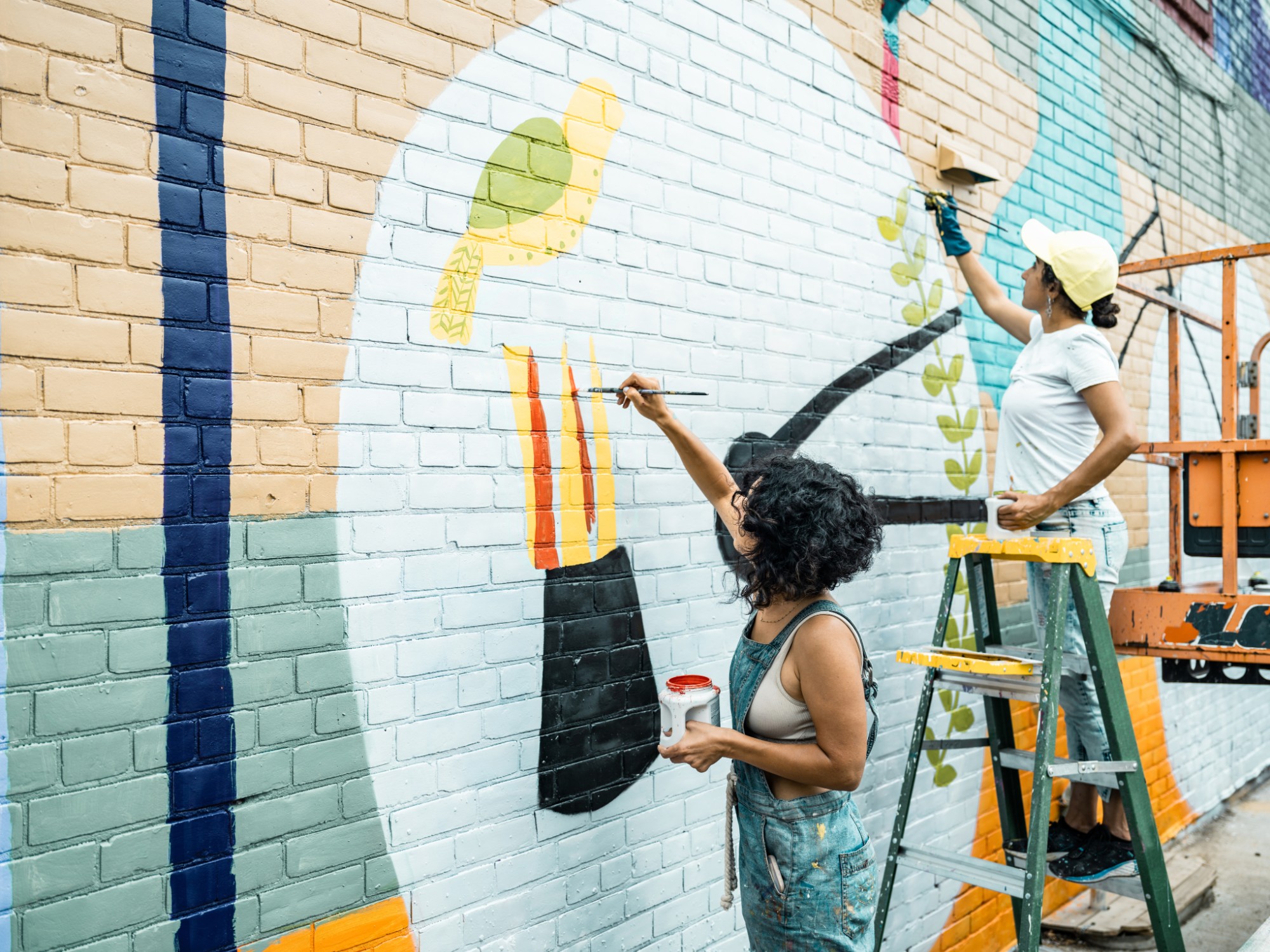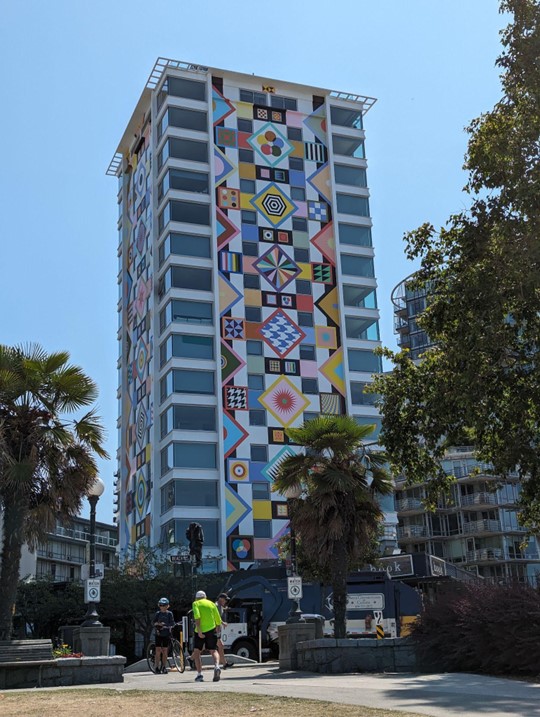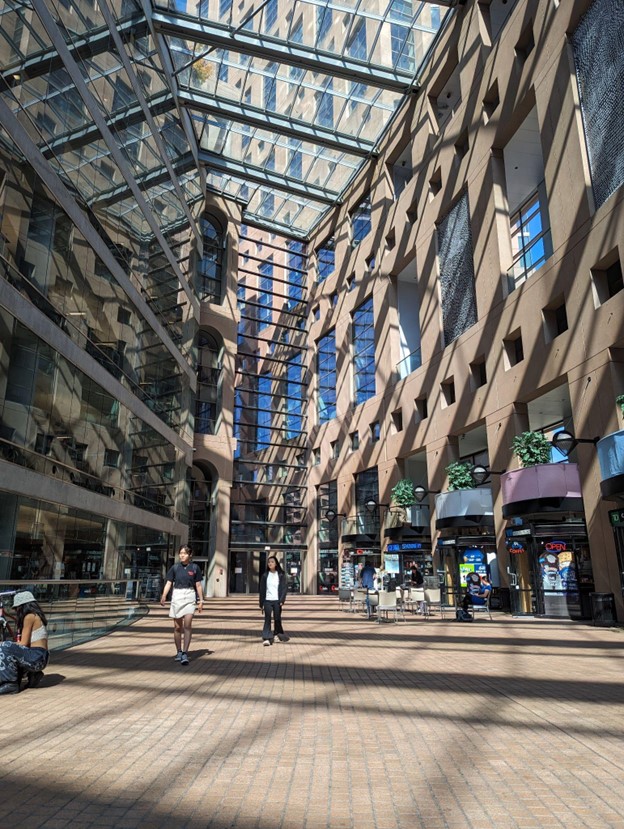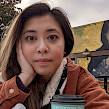City of canvas

Last summer, my husband Eddie and I were taking an afternoon stroll through Downtown Vancouver. As we approached English Bay, a sight caught my eye in the skyline: a massive colourful mural covering a newly built 16-storey rental tower, completed by none other than local landmark himself Douglas Coupland. As a life-long fan of his work (JPod, anyone?), I immediately loved it. I turned over to express my admiration for the piece to Eddie - who I should mention is an artist himself. To my bewilderment, however, he was not a fan.
They say beauty is in the eye of the beholder. But what about art that has to be beheld by the eyes of everyone in the city?
Public art faces a double-edged sword. Not only must it be instantaneously understood and digestible to the immediate passerby, but it must also be able to withstand the scrutiny of an observer looking at it for a long time.
Vancouver is abounded with such exhibitions. Douglas Coupland’s mural in English Bay isn't his only mark on the city. Digital Orca, a sculpture installed in 2009, overlooks the Burrard Inlet next to the Convention Centre. It is a pixelated piece that is somehow poignant and nonsensical all at once. More recently he partnered with Anthem Properties and Beedie to create Fordite, a collection of three egg-like sculptures to commemorate their Station Square master-plan project in Burnaby.
It is glaringly obvious that my admiration of Douglas Coupland bleeds through my words here, in what is merely fanatic enthusiasm disguised as public opinion. But I’m aware that someone who is not a fan of his work, let alone someone who is not aware of his existence altogether, may have a vastly different experience with Digital Orca and Fordite than I did.

Personal experience, art and city planning cannot be so easily separated from one another. They embrace each other frequently, and with vigor. Take Library Square. Officially opened in 1995, the library wears its Colosseum influence on its concrete sleeve. It stands at 9 stories and encompasses an entire city block right in the heart of Downtown Vancouver. I spent many hours of my teenage years there: studying in a quiet nook, using the internet, reading Chuck Palahniuk novels and Batman comic books. Years ago, I had worked as a Substitute Teacher at the daycare in the building. Eddie and I had even contemplated getting married on the rooftop garden in 2022. When Ruth Ozeki, one of my favourite authors, wrote her recent novel The Book of Form and Emptiness, any local would be able to read past the fictional location descriptions and see it for what it was: Library Square.
Whenever I walk through the glass piazza, it is not only light that fills the space. I bring in my own memories and experiences. It is filled with magic and wisdom and pigeons. It is the first building that I ever considered to be a work of art.

Others, however, may not look at public art with the same romantic lens. And should they have to?
In 2021, a statue called Boy Holding A Shark was scheduled to be installed in the very popular False Creek area. Standing at over 25 feet tall, the sculpture would be made of steel and features exactly its namesake: a boy holding a shark, in bright neon colours. However, the proposal was met with such opposition that the City of Vancouver eventually denied the request for installation. The Boy would have to find somewhere else to hold A Shark.
Personally, I disliked the statue. I thought it was unsightly and out of place. But who was I to hold this judgment, when I simultaneously have adored other public works of art? The power of the collective community, drawn together in their shared distaste for the piece, could not be denied though. Whether or not you liked Boy Holding A Shark, its denial was an act of civic participation.
In many ways, municipal governments are like curators: the decisions they make on what art is permissible vs. not will alter the very fabric and composition of their cities. But to reduce the selection of public art to a bureaucratic process would strip away the very subjectivity that is at the core of visual expression. What’s the line between beauty and nuisance? Who then, can call themselves an Artist?
I think everyone who lives, works, or builds cities is an Artist. As we look into the future of urban planning, we can redefine how to incorporate art into our built world by redefining what public art itself means. This redefining process will not be a clean straight line. There will be curves and raised edges and complex questions with no simple answers. But isn’t that part of what art is, in the end?
